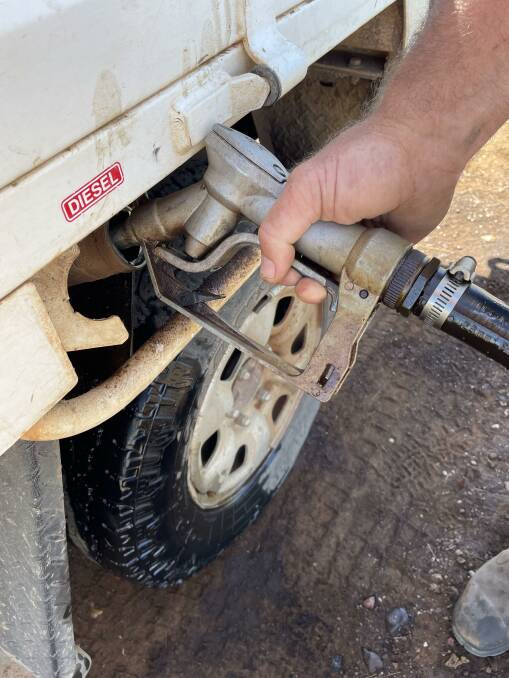
AUSTRALIAN croppers are facing unprecedented levels of risk as they contemplate their planting decisions for the 2022 crop.
Subscribe now for unlimited access to all our agricultural news
across the nation
or signup to continue reading
While grain prices are at near record levels, farmers are concerned by the equally stratospheric costs of inputs, with fuel, fertiliser and key herbicides all at their highest price levels ever.
Rabobank senior agricultural analyst Wes Lefroy said the year on year breakeven tonnages highlighted the big increase in risk this season.
"This year's breakeven wheat tonnages in NSW are up 33 per cent and in Western Australia the figure is up 25pc," Mr Lefroy said.
Fuel prices have soared in the wake of the conflict in Ukraine.
Mr Lefroy said terminal gate diesel prices, as reported by the Australian Institute of Petroleum had hit their highest price on record by a considerable margin as of March 11.
"Prior to that we had seen prices higher in 2008, but at 211 cents a litre in Sydney, which is representative of the prices in capital cities across the country, we've comfortably passed the $1.82/litre we saw in July 2008."
The end of week figure for Sydney rose a whopping 34c/litre, or 19pc.
The seismic shocks seen in inputs costs following the onset of war in Ukraine could not have come at a worse time for Australian croppers.
Orders for winter crop inputs, such as fuel and fertiliser are currently being placed meaning farmers will be fully exposed to price increases.
"The phosphorus is probably already organised but nitrogen and fuel are still very much in play and there is very little to suggest we'll see a large drop in oil prices until later in the year," Mr Lefroy said.
"Over 60pc of our urea arrives between March and May so we're going to see supplies based on current high global prices."
However, in a sliver of good news there may be an end to the rapid rise in fuel prices.
"The massive spikes we have seen recently are not going to be sustainable and reflect a short term rush as the market tries to come to terms with what is happening in terms of supplies," said Thomas Elder Markets analyst Andrew Whitelaw.
"I just can't see the talk of prices getting to $3 a litre happening," he said.
In the short-term, farmers will be at the mercy of the retail prices on the day they have fuel delivered.
"There is no mechanism to forward price fuel for farmers," said Grain Growers chairman Brett Hosking.
"We pay what the price is on the day its delivered, so even if you ordered a week before at present you could face a substantially higher bill if it is delivered a week later and the price continues to go up."
Mr Hosking said there were few options for risk management either in terms of financial derivatives or physical ability to store long-term fuel needs.
"There is no real hedging product out there we can use and most people will have enough storage for a couple of months, not enough to store a year's worth if there was a good opportunity when prices were low."
Many Australian croppers use in excess of 100,000 litres of diesel annually, but storages generally range from less than 5000 litres up to 10,000 litres in more accessible regions up to 40,000 litres for larger operators in more remote areas.
Further complicating the matter is the different formulations of diesel used at different times of the year.
Diesel in winter has lower cloud point (CP) and cold filter plugging Point (CFPP), relating to the waxy content within the formulation that can cause poor engine performance in cold weather.
The seasonal variations in diesel formulations mean stocking up on supplies in summer may mean growers have a product not fit for purpose for use in planting the crop in late autumn or spraying in winter.
Start the day with all the big news in agriculture! Sign up below to receive our daily Farmonline newsletter.


